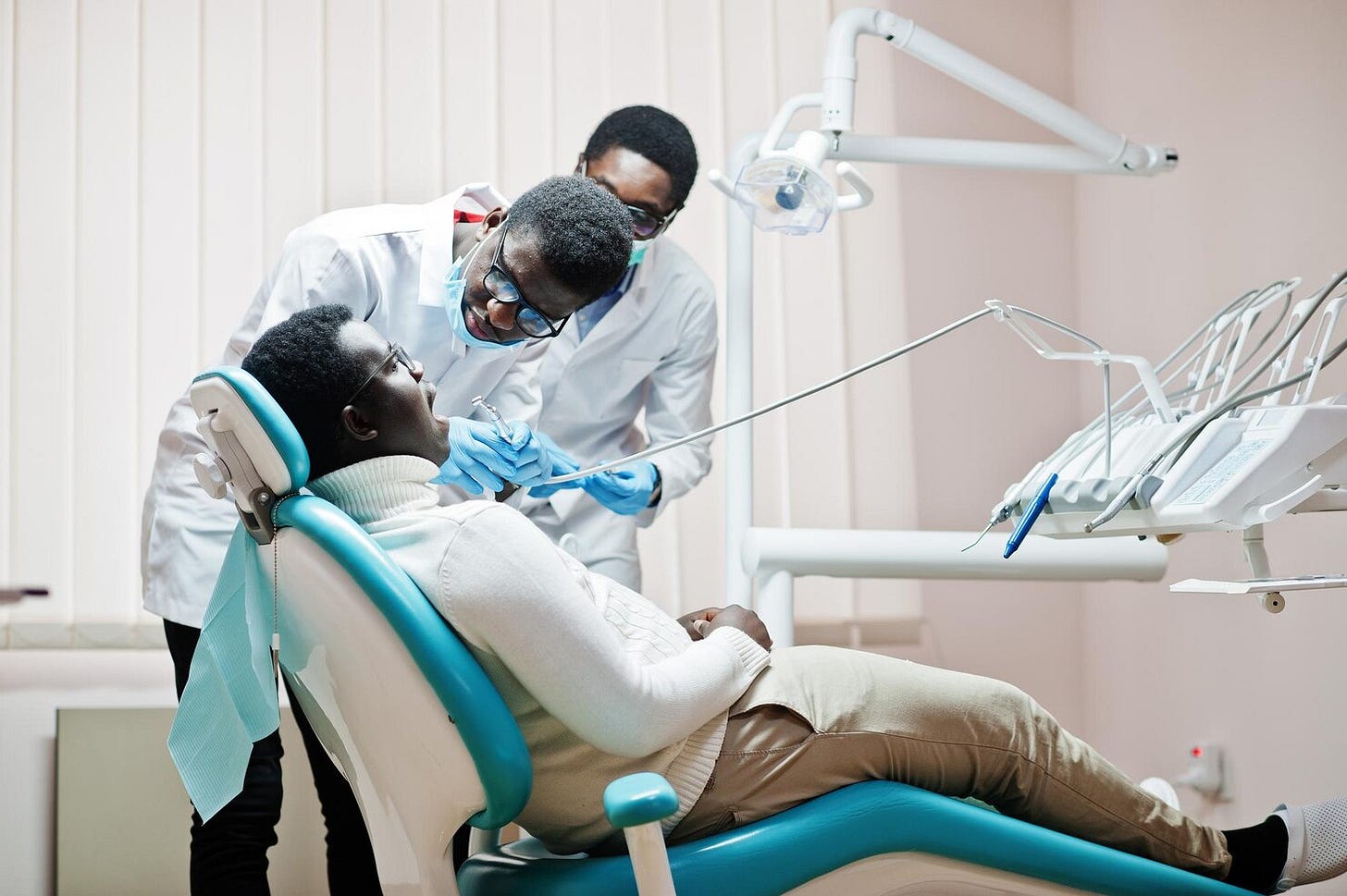Dental Education and Dentist-to-Population Ratio in Angola
The reality of dental education and oral healthcare in one Western African country
In the realm of healthcare, the adequacy of dental education and the ratio of dentists to the population in Angola present pressing challenges. According to a study by Moimaz and colleagues (2021), Angola has a significant disparity in the number of dentists available for its population, highlighting a need for a more robust dental education framework.
Background and Methodology
The study, a descriptive, exploratory, and documentary analysis, investigated the proportion of dentists to the Angolan population, the state of undergraduate and graduate dental education, and reviewed the pedagogical projects of current courses. Data was collated back in 2019 from the National Statistics Institute of Angola, the Order of Doctors of Angola, and various government websites.
Findings
With only 701 registered dentists for a population of over 30 million (1 dentist per 43,460 people), Angola faces a stark disparity in dental care availability. This ratio is significantly higher than the recommended ratios in other countries, such as India (1:7,500) and Brazil (1:3,000 for primary care). Among the 80 higher education institutions (HEIs) in Angola, only ten are authorized to offer undergraduate dentistry courses, with none offering postgraduate courses in this field.
Geographical Distribution
The majority of these institutions are located in the capital, Luanda, with the remainder spread thinly across other provinces. Four out of Angola's seven academic regions do not have any dental courses, exacerbating regional disparities in dental education and care.
Curriculum Analysis
A deeper analysis of the Benguela Higher Polytechnic Institute, one of the institutions offering dental courses, revealed a comprehensive curriculum with a workload spanning 5,370 hours over six years. The course structure emphasizes practical and curative activities, reflecting a broader trend in dental education that prioritizes treatment over prevention.
Challenges and Opportunities
The study highlighted several challenges, including:
Lack of uniformity and accessibility in course curricula and pedagogical approaches.
Financial constraints, given that dental education is primarily offered in private institutions with fees beyond the reach of many Angolans.
Bureaucratic hurdles in obtaining detailed information from HEIs.
Conclusion
This study concludes a critical need for expanding and standardizing dental education in Angola. It calls for policy interventions to increase the number of dentists and improve the quality of dental education, thereby addressing the oral health needs of the Angolan population.
Tables for Reference

References
Moimaz, S. A. S., Songa, M. A. S., Saliba, N. A., & Saliba, T. A. (2021). Dental education and proportion of inhabitants by Dentist in Angola. Research, Society and Development, 10(4), e51110414356. DOI: 10.33448/rsd-v10i4.14356







